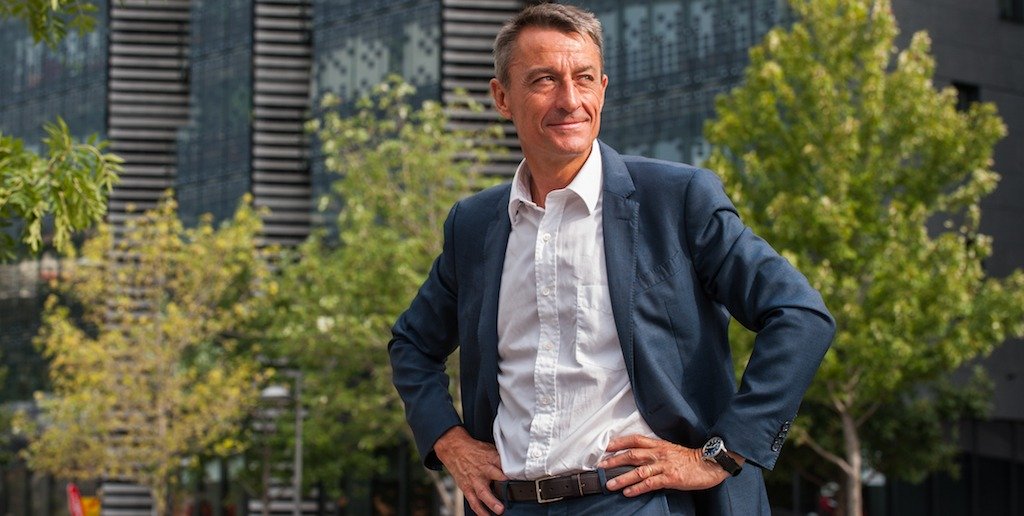President of the Smart Building Alliance, Emmanuel François shares his vision of the smart city of tomorrow :
« The smart city of tomorrow is above all a cognitive city, that is, in harmony with its environment and its occupants. She is connected, hyper connected as are her inhabitants. It adapts in real time to different situations for the well being of its inhabitants, their security and provide the best service at the lowest economic and environmental cost. It communicates multiple data, it ensures the traceability of all the acts and it guarantees the confidentiality of the data. Of course this requires reliance on technology including AI. »
According to Emmanuel, the current necessities for a city in terms of use are :
« I think there are major topics such as mobility and housing. In the digital age, it is necessary to rethink both the mobility and the use of space in order to reduce transport times and reduce their carbon footprint while bringing more activity and service close to places. of life. »
Everyone, whatever their location, will be concerned by this transition :
« We must understand that with the internet, our world has changed fundamentally. All the activities that were concentrated and centralized can now also be deported… This is a great opportunity to rebalance the territories, be more sustainable and ensure access to services and activities much more balanced. »
The steps for this transition to the smart city of tomorrow :
« The prerequisite is to have a digital infrastructure in the city, unique, pooled for all services and activities. This also requires having network and this is not yet the case everywhere. It also requires trust. Without trust, users will have a hard time making the move. It is on this topic that the SBA is working with its Ready2Services (R2S) reference framework which guarantees both the interoperability of equipment and systems, the opening of data and secure access to these data while preserving individual freedom. . It’s fundamental … Without pedagogy, the transition will be difficult. Finally, and it is indeed essential, we need a legal and regulatory framework that accompanies this change. »
And the place of the user in this smart city ?
« For me, the user is at the center of the smart city. He is the actor and the consumer. He co-builds his city and is involved daily in its governance by relying on new tools such as the service platform or the blockchain that ensures traceability. He is responsible because he is informed in real time about his environment and the consequences of these acts on this environment. »
The different actors involved in this transition :
« GAFAM or BATX are investing heavily in the smart city and are just modeling cases and then scaling them up. This is for example the case of Google in Toronto or Amazon in Seattle. However, I think there are other possible alternatives with the advent of service platforms managed by a triptych associating public, private and citizens. »
Smart city = ecological city ?
« It is now possible to design Data Centers powered by renewable energies and ideally in direct current. This is the case in China in particular. »
Risks to avoid :
« The main thing in my opinion is security. From the moment everything is connected and interconnected there is a real risk, but I will say that this risk is already there today, unfortunately. The SBA is aware of this and cybersecurity is one of its top priorities, with a desire to manage this subject in the broadest and most dynamic way possible. This is one of the reasons why we internationalize to pool experiences and expertise. »
A last word for the end ?
« The technology is here and must allow us to address current environmental, economic and societal issues, but technology alone is not enough. It takes the adhesion of every human being. This is why I decided to launch a foundation, the MAJ Foundation, intended especially for future generations to bring a new vision and show that there is another way for another world, more sustainable, more social and more balanced. My goal is to bring this vision closer to the individual so that he takes it that he exchanges, that he contributes to enrich and especially the door in his daily life. I do not think the answer will come from any leader whatsoever. It is an error resulting from our reflexes and habits of the past. The answer must come from us, shared, co-constructed, lived and enriched on a daily basis. It is necessary to use the digital at its fair value and in this case, it can be a real opportunity, I will even say a gift for the humanity. »
Emmanuel FRANCOIS. Saint Didier au Mont d’Or.




